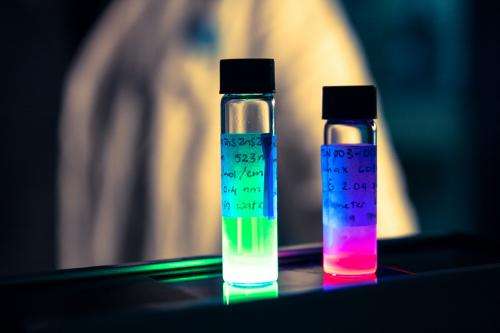Moving toward a faster, simpler Hendra virus detection system

(Medical Xpress)—CSIRO scientists, in collaboration with researchers at the Bio21 Institute at the University of Melbourne, have developed a new method which could pave the way for a portable Hendra virus biosensor.
In a paper published in the journal of Advanced Healthcare Materials, CSIRO scientists detail the outcome of the study designed to find a faster, simpler way to detect the virus.
Hendra virus was discovered in 1994 following an outbreak of illness in a large racing stable in the Brisbane suburb of Hendra.
Current detection methods are mainly lab-based and require samples to be shipped to state or national testing labs. CSIRO's tests have shown that this new method can deliver a positive or negative test result, under lab conditions, within 30 minutes. The hope is this can be reduced to ten minutes in the future, making portable detection a reality.
The team tested three new detection methods and found that by using quantum dots - to increase the sensitivity of current analytics methods (assays) - they were able to simplify the detection process to the point where the creation of a portable sensor is now possible.
The method uses a similar principle as a current lab technology, known as Luminex, but the combination of quantum dots and magnetic nano-particles allows the same process to be carried out on a much smaller scale.
"The early detection of viruses, such as the Hendra virus, will greatly enhance the success rate of any biosecurity counter measure," Dr Paolo Falcaro, CSIRO Research Scientist and leader of the joint research team, said.
"Further optimisation of the system is required, but this study is a proof-of-concept of the possibility to implement this method in a portable Hendra virus sensor that could be used at the point of care. The most exciting aspect to this technology is it could be used to detect any other virus by simply targeting the virus with the corresponding antibody."
Quantum dots and magnetic particles were chosen to simplify the reaction required to detect the virus. The biosensor works by targeting the Hendra virus and its antibody. If there is a match, the sensor delivers a positive result.
Professor Paul Mulvaney, of the Bio21 Institute at the University of Melbourne, said: "This is the first application of these fluorescent nanocrystals developed at the University of Melbourne for virus detection and an important example of how the University of Melbourne-CSIRO partnership can help us focus basic science onto important health challenges. Getting this test into a microfluidics platform will enable us to develop a generic approach to pathogen detection in the field."


















